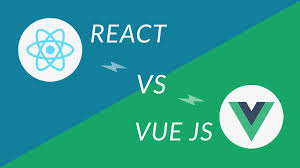Choosing Between React and Vue: A Detailed Comparison
 Obatola Opeyemi
Obatola Opeyemi
Introduction
In the ever-evolving world of frontend development, choosing the right framework can be a game-changer. Two of the most popular frameworks are React and Vue, each with its unique strengths and applications. This article aims to compare these two powerful tools, highlighting their key differences and helping you decide which one suits your needs better.
Overview of React
React, developed by Facebook, is a JavaScript library for building user interfaces. It has gained massive popularity due to its component-based architecture, which allows developers to create reusable UI components. Some of the key features of React include:
Component-Based Architecture: React encourages building UI components that can be reused across the application, leading to more maintainable and scalable code.
Virtual DOM: React uses a virtual DOM to optimize updates, making the UI more responsive.
JSX Syntax: React uses JSX, a syntax extension that allows writing HTML-like code within JavaScript, making the code more readable and easier to write.
Unidirectional Data Flow: React’s one-way data flow ensures that the state is managed more predictably.
Strong Community Support: React has a large and active community, providing a wealth of resources, libraries, and tools.
React is widely used by companies like Facebook, Instagram, and Airbnb, making it a reliable choice for building large-scale applications.
Overview of Vue
Vue, created by Evan You, is another powerful JavaScript framework for building user interfaces. It has gained popularity due to its simplicity and flexibility. Key features of Vue include:
Reactive Data Binding: Vue’s reactive data binding ensures that the UI is automatically updated when the data changes.
Virtual DOM: Like React, Vue uses a virtual DOM for efficient updates.
Single-File Components: Vue allows writing HTML, CSS, and JavaScript in a single file, making the development process more streamlined.
Simplicity and Ease of Integration: Vue is easy to integrate into existing projects, making it a great choice for both small and large applications.
Flexibility in Project Structure: Vue provides flexibility in how you structure your projects, allowing you to scale your application as needed.
Vue is used by companies like Alibaba, Xiaomi, and Laravel, showcasing its versatility and effectiveness in different contexts.
Comparison of React and Vue
Learning Curve:
React: React has a steeper learning curve due to JSX and the need for additional tooling. However, once mastered, it offers immense flexibility.
Vue: Vue has a gentler learning curve, making it more beginner-friendly. Its syntax is straightforward, and the documentation is excellent.
Flexibility and Scalability:
React: React is highly flexible and is often chosen for large-scale applications due to its ability to integrate with various state management libraries and other tools.
Vue: Vue is also flexible but shines in its simplicity. It is suitable for both small and large projects, with built-in solutions for state management (Vuex) and routing (Vue Router).
Community and Ecosystem:
React: React boasts a larger community and a vast ecosystem of third-party libraries and tools. This means more resources, plugins, and support.
Vue: Vue’s community is growing rapidly, and it has a strong ecosystem, although smaller compared to React’s. Vue’s official libraries are well-integrated and provide a seamless development experience.
Performance:
Both React and Vue offer excellent performance due to their virtual DOM implementations, making them capable of handling complex and dynamic UIs efficiently.
State Management:
React: React often uses Redux or the Context API for state management, providing robust solutions for managing application state.
Vue: Vuex is Vue’s official state management library, offering an integrated and easy-to-use solution for managing state across the application.
Documentation and Learning Resources:
React: React has extensive documentation, numerous tutorials, and courses available, making it easy to find learning resources.
Vue: Vue’s documentation is well-organized and beginner-friendly, providing a smooth learning experience.
My Experience with React in HNG
As a participant in the HNG internship, I am excited to work with React. React’s component-based architecture and vast ecosystem will allow me to build scalable and maintainable applications. I look forward to deepening my understanding of React’s features, such as hooks and context API, and applying this knowledge to real-world projects during the internship. Working with React in HNG will not only enhance my technical skills but also prepare me for future opportunities in the frontend development field.
Conclusion
Both React and Vue are powerful tools for frontend development, each with its unique advantages. React offers flexibility and scalability, making it ideal for large-scale applications, while Vue’s simplicity and ease of integration make it a great choice for developers of all levels. Ultimately, the choice between React and Vue depends on your project requirements and personal preferences. I encourage you to explore both frameworks and choose the one that best suits your needs.
For more information about the HNG Internship and to explore the opportunities it offers, check out the following links: HNG Internship, HNG Hire, and HNG Premium.
Call to Action
If you're passionate about frontend development and eager to learn and grow, I highly recommend exploring the HNG Internship program. It's an excellent platform to gain hands-on experience, work on exciting projects, and connect with a community of like-minded individuals. Don't miss this opportunity to enhance your skills and advance your career in frontend development.
Subscribe to my newsletter
Read articles from Obatola Opeyemi directly inside your inbox. Subscribe to the newsletter, and don't miss out.
Written by
